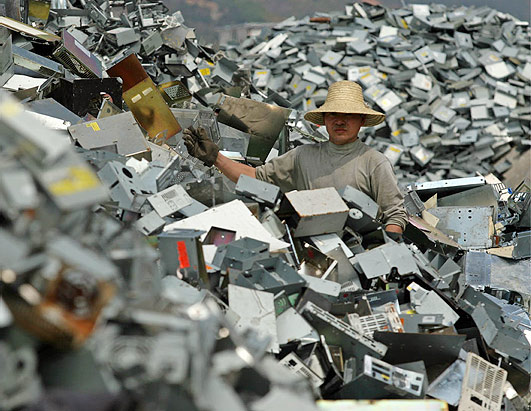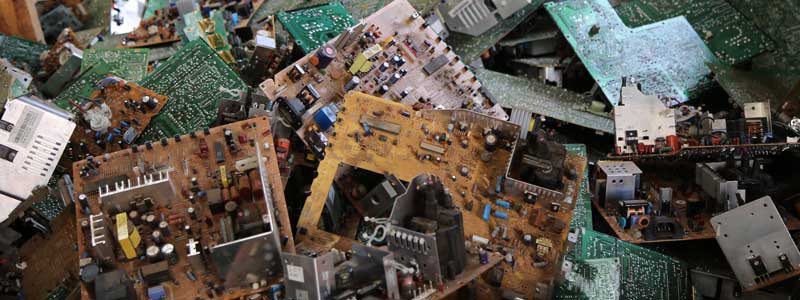The world is heading for a potentially devastating deluge of electronic waste as many nations struggle to keep the sheer volumes they are facing under control, a UN study report has warned.
Top Rated Budget Laptops
Last update on 2025-06-28 / Affiliate links / Images from Amazon Product Advertising API
In some countries, the amount of e-waste being produced – including mobile phones and computers – could rise by as much as 500 percent over the next decade, and growth on such a scale will create intractable problems for people’s health and the environment as waste, much of it containing toxic material, decay.

The UN report titled, “Time to seize the opportunity, tackle the challenge of e-waste”
- The world produces as much as 50 million tonnes of electronic and electrical waste (e-waste) a year, weighing more than all of the commercial airliners ever made. Only 20% of this is formally recycled.
- The e-waste produced annually is worth over $62.5 billion, more than the GDP of most countries. There is 100 times more gold in a tonne of e-waste than in a tonne of gold ore.
- UN agencies have come together with the World Economic Forum, the Global Environment Facility and the World Business Council for Sustainable Development to call for an overhaul of the current electronics system.
- The Nigerian Government, the Global Environment Facility and UN Environment have announced a $15-million initiative to kick off a circular e-waste system in Nigeria.
Developing countries, in particular, are in severe danger of facing a mountain of harmful e-waste because they have almost no processes in place whatsoever to dispose of it safely and efficiently.
“This problem is not going away”
“This problem is not going away”
Sales of cell phones, gadgets and appliances continue to rocket in places like China, India, Latin America and Africa and at the moment these places do not have proper e-waste collection and recycling plants that are crucial to not only protecting people’s health but to also recover valuable materials and help develop a new green economy.
“This is a global question,” said Guido Sonnemann, programme officer for Unep. “This problem is not going away, it’s growing.”
Many of the materials used in electronic equipment can be reused in new products, however the growth in demand for things like phones and computers is far out-pacing many nations’ recycling capacity and now the problem is snowballing.
According to the report, China annually generates 500,000 tonnes of waste from refrigerators, 1.3 million tonnes from TVs and 300,000 from PCs. In comparison, India produces 275,000 tonnes from fridges, 275,000 from TVs and 56,300 from PCs.
America is the world leader, forecast to produce over three million tonnes of e-waste in 2010, but they have the necessary state-of-the art e-waste recycling plants.
“Illegal imports of e-waste”
Ruediger Kuehr, who oversees zero-emission initiatives at the United Nations University expressed his concerns: “It’s definitely in the countries which have substantial increase in consumption – countries like China and India, which are still substantial targets for illegal imports of e-waste,” he said. “The same applies for countries like Nigeria.”
In the Middle East, although right now there is no comprehensive legislation or rules governing e-waste management, the region is waking up to the challenge and has started doing its bit to manage e-waste more effectively.
Habiba Al Marashi, Chairperson, Emirates Environmental Group (EEG), told Emirates Business: “The country is beginning to address the e-waste challenge by focusing on different types of e-waste such as cellular phones, used batteries and old computers.
“The private sector is taking a lead role in this regard by initiating take-back programmes for certain electronic devices as part of their corporate social responsibility. This has been the practice in other countries and the feasibility of adopting a similar system is being studied by different entities.”
Scaling the e-waste hurdles
The hurdles that nations have to navigate in order to carry out proper e-wast management include, uncoordinated government regulation at both the national and regional level; varying compliance requirements from country to country and state to state adding unnecessary costs; consumers not being provided with effective incentives to reuse or recycle and commodities prices often declining below the price point for e-waste management companies to make a profit.
But there are things governments can do to ensure the problem is dealt with. Authorities can implement an international system to report, quantify, and control the movement and disposition of e-waste as well as utilising the framework of an existing international organisation to mandate the implementation of the minimum global requirements for e-waste management. Also, a greater effort can be made to cooperate, communicate, and enforce e-waste management requirements across political boundaries and geographical regions.
Check out the infographic here to see just how serious the e-waste problem as become and which nations are producing the most.









It’s something we need to keep in mind when switching to new gadgets every year; it’s a serious thing, man!